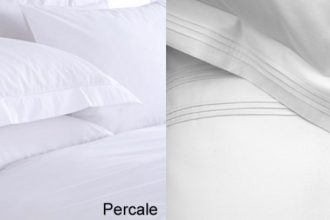One of the most overlooked factors in healthcare environments is the quality of the mattress. Patients who are bedridden for extended periods face a high risk of developing bedsores, discomfort, and musculoskeletal issues. A poor-quality mattress not only exacerbates these problems but can also lead to severe health complications that could have been prevented with the right choice of bedding.
Many hospitals and long-term care facilities invest heavily in medical treatments and nursing care, yet they often ignore the crucial role that proper mattresses play in patient recovery. A high-quality, pressure-relieving mattress can significantly prevent skin breakdown, improve circulation, and enhance overall patient well-being.
Understanding Bedsores and Their Causes
Bedsores, also known as pressure ulcers, are painful injuries caused by prolonged pressure on the skin. They develop when patients remain in the same position for too long, restricting blood flow to specific areas. Bedsores most commonly form on bony prominences such as the heels, hips, lower back, and elbows.
Several factors contribute to the formation of bedsores, including poor mattress support, excessive friction, and lack of airflow. When patients lie on hard, low-quality mattresses, the risk of developing pressure ulcers increases drastically. Without proper cushioning and weight distribution, certain parts of the body bear too much pressure, leading to tissue damage.
Why Standard Mattresses Fail in Healthcare Settings
Traditional mattresses are not designed to accommodate the unique needs of immobile patients. Many hospitals and nursing homes still use basic spring or foam mattresses that provide minimal support and fail to relieve pressure effectively. These mattresses often lead to uneven weight distribution, making it difficult for caregivers to prevent bedsores and discomfort-related complications.
Another issue with standard mattresses is their inability to adapt to a patient’s body shape and weight. Without adaptive pressure relief, a patient is forced to bear weight on limited points, creating a higher risk of skin breakdown. Standard mattresses also do not promote airflow, leading to excessive sweating, skin irritation and increased infection risks. Mattress manufacturers like Original Mattress Factory have developed solutions that focus on ergonomic support, better pressure distribution and breathable materials, which address these exact concerns in both clinical and home care settings.
The Role of High-Quality Medical Mattresses
To prevent bedsores and discomfort, healthcare facilities must invest in specialized medical mattresses designed to distribute weight evenly and reduce pressure points. One of the most effective solutions is an air-alternating pressure mattress, which periodically adjusts pressure by inflating and deflating different sections, ensuring that no single body area experiences prolonged pressure. These mattresses are highly recommended for patients with limited mobility.
Another option is the memory foam and gel mattress, which molds to the patient’s body shape. It provides customized support, enhances comfort, and reduces friction. These mattresses are particularly useful in long-term care facilities where patients remain bedridden for extended periods.
A hybrid mattress combines foam, gel, and air-based technology to provide continuous pressure redistribution and improved airflow, keeping the skin cool and dry. This type of mattress minimizes pressure points while offering the necessary support for spinal alignment.
How the Right Mattress Improves Patient Outcomes
Investing in high-quality mattresses directly impacts patient health and recovery. Patients who experience less pain, improved circulation, and proper spinal alignment are more likely to recover faster and avoid secondary complications.
Beyond bedsore prevention, quality mattresses also contribute to better sleep, essential for healing. A well-rested patient has a stronger immune system, lower stress levels, and improved mental well-being. Sleep plays a crucial role in cell regeneration and tissue repair, making it a fundamental aspect of healing.
A comfortable and supportive mattress also reduces nurses’ and caregivers’ need for frequent repositioning. This minimizes patient discomfort and reduces the risk of additional injuries caused by unnecessary movement. Patients who sleep on proper medical mattresses are less likely to experience chronic pain and stiffness, which often arise from prolonged bed rest on substandard bedding.
Another critical aspect of a high-quality medical mattress is its ability to reduce friction and shear forces on the skin. Patients with difficulty moving independently are prone to skin tears and irritation when placed on traditional mattresses. Medical-grade mattresses, designed with advanced materials, help minimize these risks by allowing smoother movements and reducing unnecessary pressure.
Ensuring patient comfort and preventing bedsores should be a top priority in healthcare settings. The quality of a hospital bed mattress plays a crucial role in reducing pressure ulcers, improving circulation, and enhancing overall recovery. Neglecting this aspect of patient care can lead to unnecessary pain and prolonged healing times. Investing in high-quality, pressure-relieving medical mattresses is not just about comfort—it is a fundamental step toward better healthcare outcomes. To explore a range of specialized hospital bed mattresses designed for patient support and care, visit cevimed.com and ensure the best rest for those who need it most.















